If you are looking to add amazing color and flavor to your garden this spring, you need to consider growing Golden Jubilee tomatoes. With their bright orange skins and mild flavor, they are a great addition for any home grower. Especially if you are looking to grow a low acid tomato!
Golden Jubilee plants produce loads of 6 to 8 ounce meaty slicing tomatoes. As an indeterminate tomato variety, their long vines grow to well over 6 feet tall, pushing out tomatoes all the way until your first frost.
These vibrant tomatoes aren’t just attractive either – they also happen to be full of juicy flavor. Jubilee tomatoes are renowned for being one of the best low-acid tomatoes around, providing gardeners with a mild tomato flavor that’s perfect for salads, sandwiches, or even turning into sauces.
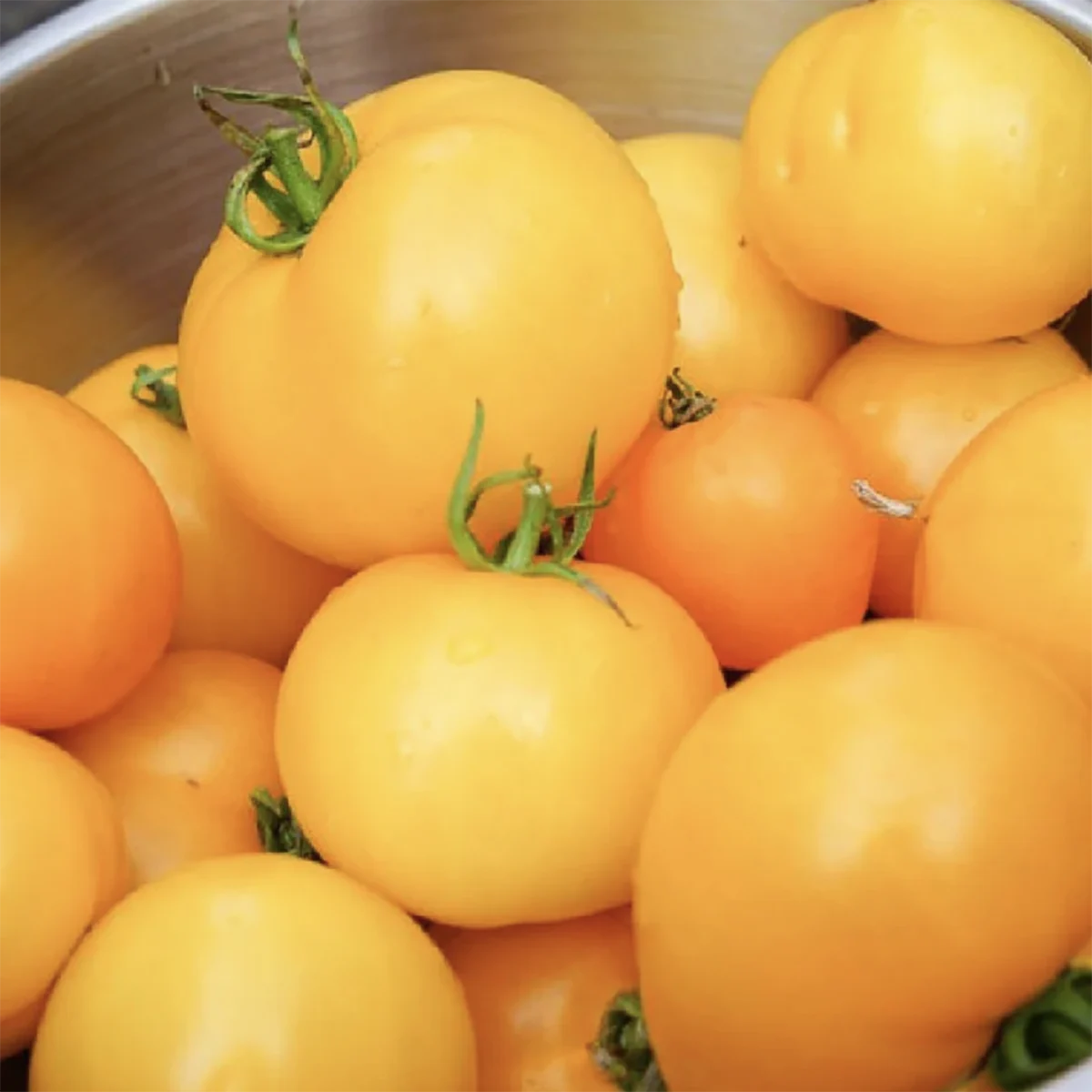
The Origins Of Golden Jubilee Tomatoes
After 6 generations of crossing “Rutgers” and “Tangerine” tomatoes together, the Golden Jubilee was born. The tomato variety was officially introduced by the W. Atlee Burpee & Company in 1943.
In the same year, it became an All-American Selections award winner for its outstanding flavor, texture, and color. The All-American Selections (AAS) is a non-profit, independent organization that tests brand-new cultivators of plants that have never been sold before – and it’s a great way to tell if a tomato is going to be a hit!
What makes Golden Jubilee such a standout is that it has a much lower acidity than most other tomato varieties – but yet, is still packed full of additional vitamin C and other nutrients.
Growing Golden Jubilee Tomatoes
Golden Jubilee Seeds & Transplants
You can typically find Golden Jubilee tomato seeds at most local nurseries or wherever seeds are sold. You can also purchase packets of seeds online at a wide variety of online seed stores. (Affiliate Product Link: Golden Jubilee Tomato Seeds)
One thing that may be hard to find is Golden Jubilee transplants for sale in the spring. Unfortunately, they are not often grown by local growers who tend to stick to a few mainstream varieties. The good news is they are easy to grow from seed.

Golden Jubilee tomatoes take around 75-80 days from planting before they are ready to harvest. Because of the long time frame, you will need to start seeds indoors and then plant as transplants in the garden. (See: “How To Grow Your Own Tomato Plants Next Year”)
Starting Seeds – Growing Golden Jubilee Tomatoes
Start tomato seeds indoors about 8 to 10 weeks before your last frost date. This will ensure your plants are big enough to handle transplanting when the time comes. The last frost date will vary based on your location and climate, so it is important to know your specific location’s date.
When starting, plant seeds about 1/2 inch down into the soil of the growing cells in your seed trays. Always use a good quality seed starting soil to ensure success. Affiliate Link: Sun Gro Seed 8 Qt. Bag Seed Starting Soil Mix
It’s best to use larger trays with growing cells that are at least 2 inches wide and deep. This will give your plants plenty of room to grow until planting day. Anything smaller and you will likely have to replant a second time.
Tomato seeds will germinate in around 7 to 14 days. Once this occurs, set the seeds underneath LED shop lights placed just an inch or two above the top of the plants. Keep the soil moist and adjust the lights higher as the plants grow to always stay an inch or two above.
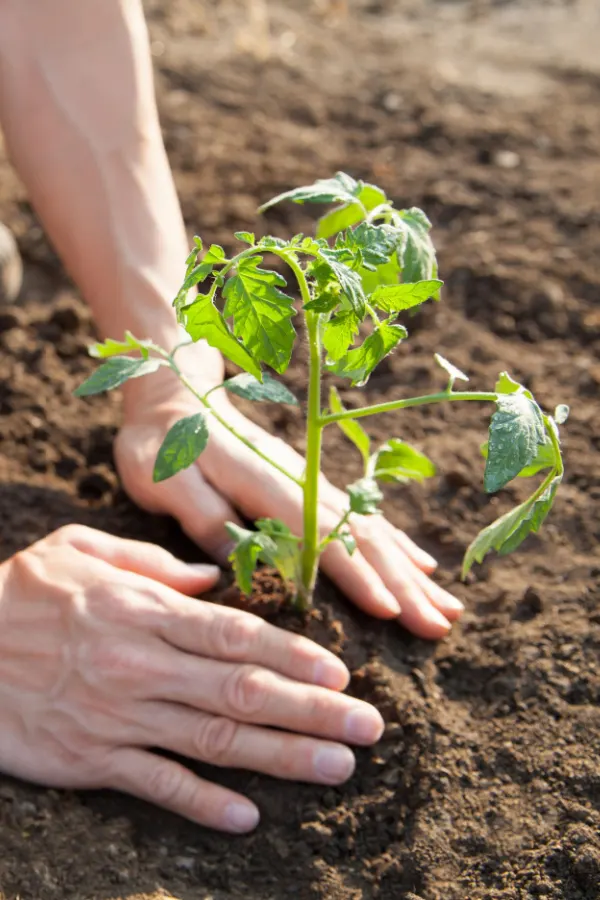
About two weeks before you want to plant outside, start to harden off the seedlings. This is simply the process of allowing your plants time outdoors before they go into the ground. Set plants out in a protective area for a few hours each day. Increase the time outdoors as planting day nears.
Planting Golden Jubilee Tomatoes
Once the threat of frost has passed and the outside temperatures have warmed up, it’s time to get your transplants into the ground.
Since Golden Jubilee plants are indeterminate, they are best suited for growing in the ground or in larger raised beds. Most containers won’t be large enough to handle 6-plus foot vines with the addition of heavy fruit.
Choose a growing location that has fertile, well-draining soil. It also needs to get at least 6 to 8 hours of direct sunlight each day. Upwards of 10+ hours of sun is even better for bloom production and ripening.
Create a planting hole that is 8 to 10 inches deep and a few inches wider than the plant’s root ball. Add in a few inches of compost as well as additional soil supplements. Great choices are worm castings, eggshells, coffee grounds and wood ashes. These supply the roots with a much needed boost of nutrients early on.
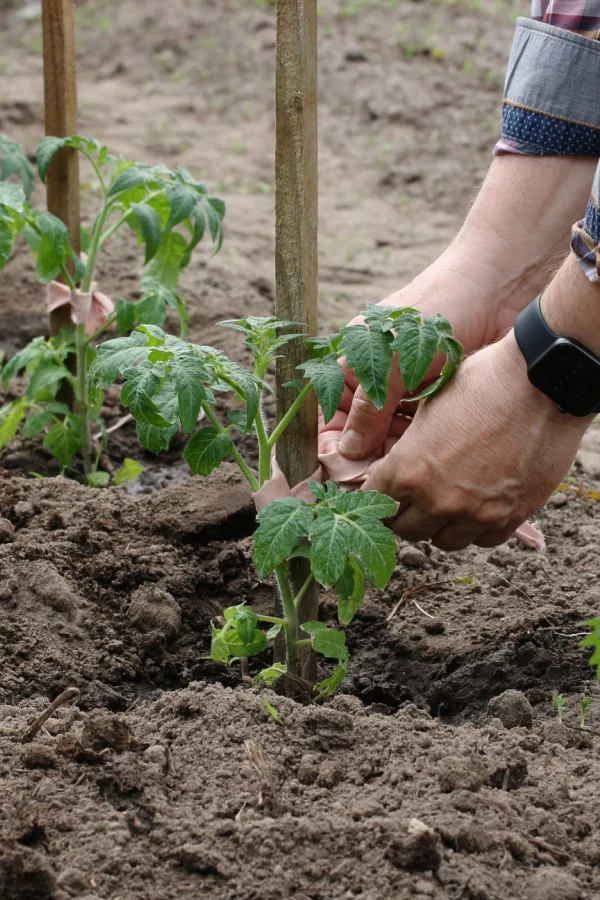
Plant your Golden Jubilee tomato transplants deep, burying up to 2/3rds of the stem if possible. Backfill with additional loose soil and compost and lightly tamp down. Water deeply to help set the soil around the plant’s roots.
Supporting, Mulching & Watering
Now is the time to add your tomato supports, stakes, or cages. Indeterminate varieties need support to help keep them off the ground and provide additional airflow. Adding the supports when planting will avoid the risk of damaging roots later on by driving in stakes once the roots have expanded.
Mulch heavily around each plant to help keep weeds at bay and to regulate moisture and soil temperatures. Use an organic mulch such as shredded leaves, straw, or grass clippings. Finish by putting a 4 to 6 inch thick layer of mulch around plants, making sure to keep it a few inches away from the plant’s stem.
When it comes to watering, Golden Jubilee plants require around 1 to 1.5 inches of rainfall or hand watering each week. When watering, water plants deeply at the ground level. Always avoid watering overhead when possible. Overhead watering can knock off blooms as well as encourage mildew growth if leaves are left overly wet.
Fertilizing & Pruning
Golden Jubilee plants are heavy feeders and require additional nutrients to power a strong crop. Use an all-purpose liquid fertilizer at half strength and apply it every two weeks. Affiliate Product Link: Espoma Organic 16 Ounce Concentrated Tomato Plant Food
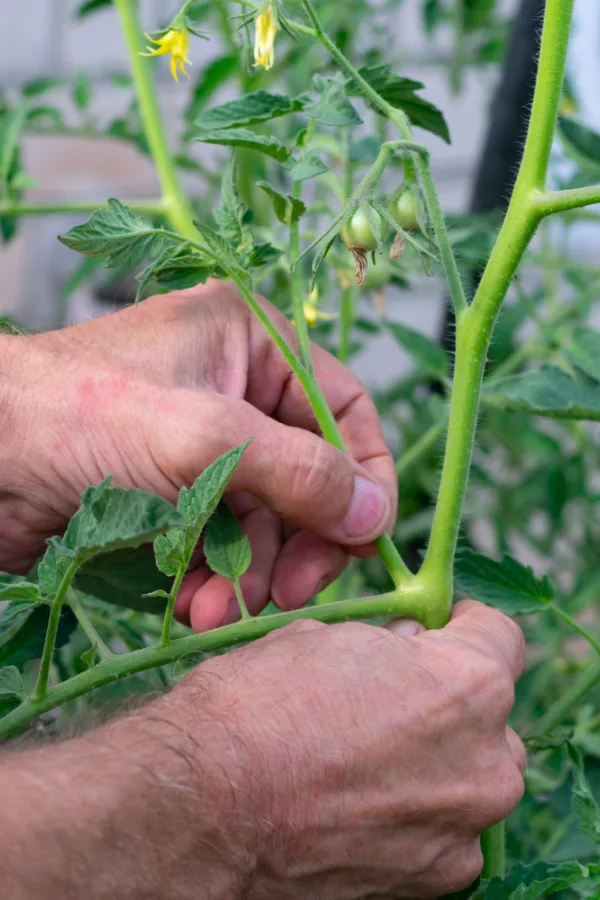
You can also fertilize tomato plants by using compost tea or worm casting tea. You can apply these organic fertilizers every fourteen days at full strength. There is no need to dilute fertilizing teas as they are a more natural fertilizer and won’t risk burning plants with too many nutrients at once.
When it comes to indeterminate tomato varieties like Golden Jubilee, pruning is vital to improve the health and productivity of the plants. The goal is to provide the plant with plenty of airflow without allowing the plant to grow out of control.
It’s always best to cut off the bottom 12 to 18 inches of stems and foliage once the plants are a few feet tall. Removing the bottom stems helps to keep leaves off the ground and improves airflow. It also makes watering a much easier task.
In addition, prune off any unwanted suckers. Not only can the suckers become overwhelming, they can also reduce the size and overall yields from the plant.
When To Harvest – Growing Golden Jubilee Tomatoes
When it comes to harvesting indeterminate plants like Golden Jubilee tomatoes, the more you harvest, the more blooms the plant will produce. If you leave too many fruits on to ripen at once, the plant will slow or stop new flower production.
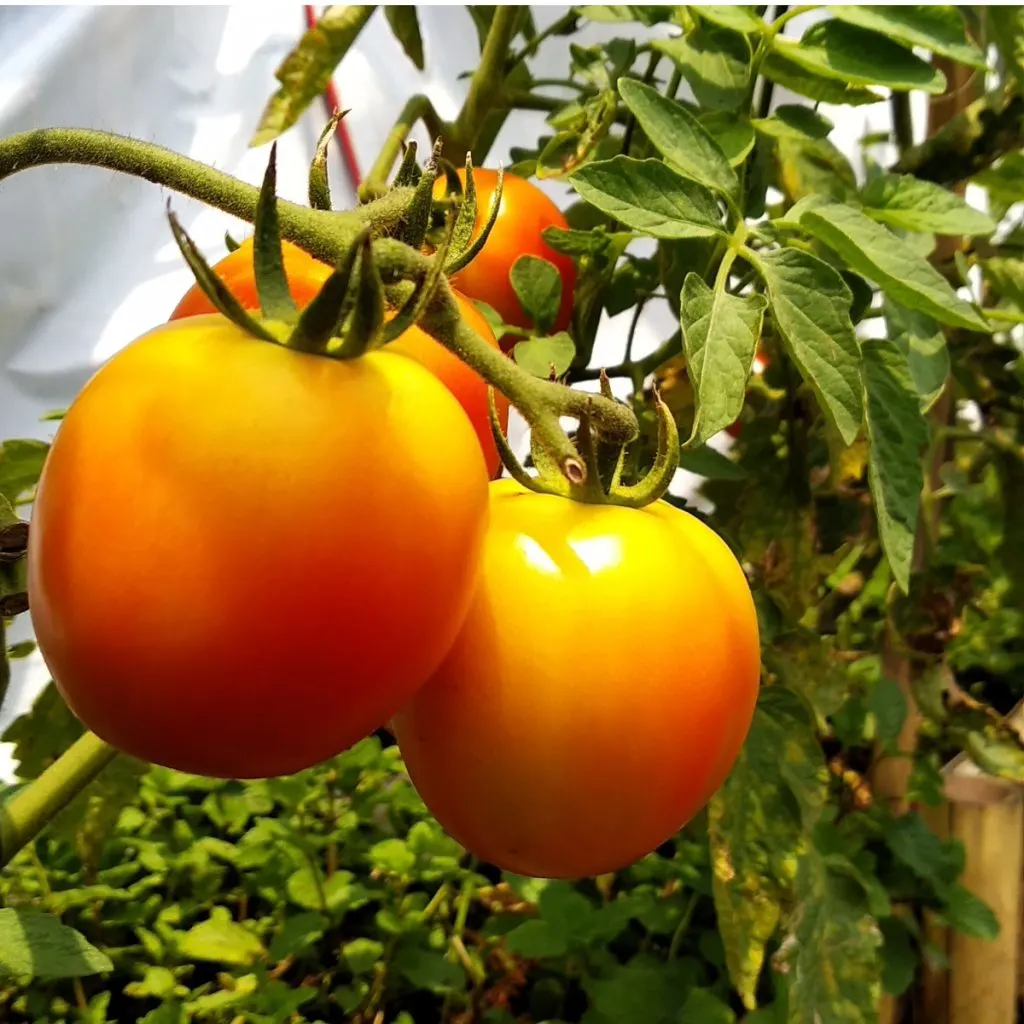
The good news is that you can harvest Golden Jubilee tomatoes early. In fact, you can pick them as they just slightly start to turn towards a yellow-orange color. The fruit will continue to ripen off the vine without the need for any of the plant’s resources to do so.
Harvesting the fruit early will help prevent fruit overload as well as reduce the chance of the tomatoes becoming damaged, split, or becoming a snack for hungry garden pests.
Here is to growing Golden Jubilee tomatoes in your garden this year – and adding the stunning orange color and amazing low-acid taste of this delicious heirloom tomato!
Follow Our Facebook Page For Even More Great Tomato Growing Tips! I Grow Tomatoes Facebook Page
I Grow Tomatoes is a website created for those who love all things about tomatoes – from planting and growing – to cooking and canning! We publish two articles every week, 52 weeks a year. Sign up today to follow via email! This article may contain affiliate links.
